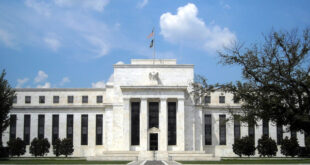Since the passage of the new tax bill, which cut corporate and individual tax rates, it was feared that inflation would rear its ugly head and put the Fed on alert. Those fears were confirmed in early February when the jobs report revealed that wage inflation came in higher than expected. Later that month, it was reported that the Consumer Price Index was also heating up. These surprise jumps in inflation sent mortgage and treasury rates higher. Mortgage rates moved up approximately a 1/2 percent from 4 percent on the 30-year fixed to 4.5 percent. That is a huge move …
Read More »Third Fed increase yields a big surprise
On December 13, the Fed raised its benchmark rate for the third time this year, this time by a quarter point to 1.5 percent. This is the rate that banks charge each other when they borrower money from each other. Banks raised the prime rate on the news from 4.25 percent to 4.5 percent. The prime rate is a variable rate that controls home equity rates, car loans, commercial loans and credit cards. The Fed decided to increase rates because of a solid economy that has been running at very low employment. In early December, it was reported that the …
Read More »A changing of the guard at the Fed
Federal Reserve Chairwomen Janet Yellen will be ending her term in February of 2018, and she should be handing the gavel over to our new chairman, Jerome Powell, who was nominated by president Trump. Bond and stock markets welcomed the nomination as Powell is seen as having a very similar leadership style to Yellen, who was dovish, meaning that they are less inclined to raise rates. Powell had been on the Federal Reserve’s board of governors since 2012 and studied at Georgetown Law and Princeton. Raising rates faster than the markets would prefer could jeopardize our economy’s health and could …
Read More »The ‘great unwind’ begins
The Federal Reserve kept rates steady in September but announced that it would begin to reduce its massive $4.5 trillion balance sheet of bonds. The Fed began buying mortgage and treasury bonds in early 2009 in an effort to artificially push interest rates down to help stimulate an ailing economy. This went on until December 2013 with a few pauses in between. The Fed’s balance sheet was roughly $800 billion at the time, so they have accumulated $3.7 trillion during that time period. The Fed announced in October that it would begin buying $10 billion less in bonds per month: …
Read More »The Fed keeps a steady hand
The September meeting of the Federal Reserve Board came and went without a move. The Fed had hoped to raise rates at least four times in 2017, but ended up limiting upward motion to only two quarter-point increases. They chose to stop raising rates when inflation remained below their target range of 2 percent even with low unemployment. In addition to a more dramatic rate increase, the Fed had hoped to start selling some of their $4.5-trillion balance sheet. The balance sheet started below $1 trillion back when the Fed began buying bonds in early 2009. They did this in …
Read More »Beware of mortgage fraud!
Sadly, there are many types mortgage fraud but the one that I would like to focus on this month is mortgage servicing fraud. What is mortgage servicing fraud? That’s when scammers send out a letter informing borrowers that their mortgages have been sold to another lender. The letter directs the recipients to mail their checks to a different company and address. Most borrowers don’t think anything of it because transfers like that are normal in our industry and they begin making payments to this so-called new lender. The borrowers don’t find out they’ve been scammed until at least a month …
Read More »The upside to chaos
Chaos in Washington is keeping a lid on mortgage rates, which contributes to affordability. The firing of FBI director Comey and the ongoing Russia probes have put pressure on the Trump administration, which in turn has added a touch of volatility to the market. Stocks suffered their worse one-day decline in May, dropping more than 300 points. The drop in equities has helped mortgage bonds/rates, which have ticked down to some of the best levels of 2017. Shortly after the election, the 30-year fixed rate moved up to approximately 4.5 percent, but now has moved down into the low 4s. …
Read More »Hold your horses!
Just when we think that higher mortgage rates are in the bag, we receive some game-changing news. Lackluster economic data, geopolitical disruptions and comments from President Trump regarding the Fed have us wondering what will come next. On the first Friday in April, the jobs report showed a disappointing 98,000 jobs created, far less than the 180,000 that were expected. Adding to that, the February and January jobs numbers were also revised down. The actual unemployment number came down from 4.7 to 4.5 percent, but those figures are the result of a household survey. I find the jobs-creation number …
Read More »The Fed does the expected, but what’s next?
Mid-March marked the first time that the Federal Reserve raised its rate in 2017. In bumping the rate up .25 percent, they noted that the economy is doing well and that we are approaching full employment. The bond market’s reaction to the move was surprisingly positive. We saw treasury and mortgage rates go down slightly that day, which is contrary to what we would have expected. Experts say that happened because the interest-rate increase was widely expected by the markets and it also signaled that the Fed is staying ahead of the inflation curve. When Chairwoman Janet Yellen was asked …
Read More »Adjustable Rate Mortgages are back
ARMs, or adjustable rate mortgages (mortgages that do not have a fixed rate), can be scary, but if you stay within your time line, it can save borrowers a lot of money when rates are on the rise. The most popular adjustable rate mortgages are the 5/1 ARM with 5/2/5 Caps, Margin 2.25, and the 7/1 ARM with 5/2/5 caps, Margin 2.25. What his means is that the payment will be spread over 30 years but the rate will be fixed for the first 5 or 7 years. Once the fixed time frame is over, the mortgage will adjust annually …
Read More » Fra Noi Embrace Your Inner Italian
Fra Noi Embrace Your Inner Italian







